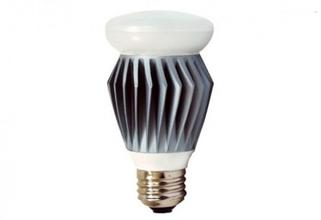
According to the forecast of global technology research company ON World, wireless LED bulbs will become the fastest growing IoT market in the next decade.
“Although there are only a few wireless LED bulbs in the market, its growth last year is still huge,†said Mareca Hatler, research director at ON World. “There are endless LED lights and applications for smart devices connected to cloud technology. The demand for developers creates a huge market."
The ON World's latest survey of about 300 people who try out new technologies shows that wireless lighting control technology is the most popular one in smart home solutions. About 50% of people choose “interesting†or “most interested†in the “adopting smart lighting systemâ€. Of these, 60% wanted smart lighting systems to be connected to at least half of the fixtures in their homes.
So far, the annual growth rate of wireless light bulbs has exceeded 250%. It is also possible to introduce several new products in the coming months. In addition to Philips' wireless LED lighting solutions, OSRAM, SmartLabs, TCP, Rieter and more and more new entrants have also launched or are developing similar products.
The cost of the product is falling dramatically. For example, TCP's latest wireless LED light bulb based on the smart home platform using GreenWave Reality cloud technology is about 30% lower in price than similar products.
Intelligent lighting systems are still moving in a variety of directions, but ZigBee has gradually become the market leader. Comcast said it plans to incorporate ZigBee LED bulbs into its Xfinity family service. At the same time, the Connected Lighting Alliance, which consists of technology companies and giant lighting companies such as GE, Philips, and Osram, has also adopted ZigBee Light Link as the standard for residential wireless lighting control. This will greatly expand the market potential of interoperable, easy-to-use wireless network lighting systems. However, the solution based on 6LoWPAN is also an option, and mobile sensing LED light bulbs using smart Bluetooth technology are also heating up in Vela Smart of Twisthink and RoboSmart of Smart Home Lab.
By 2020, the use of wireless light bulbs and luminaires connected to the Internet worldwide is expected to increase from 2.4 million this year to more than 100 million. By then, most will use wireless ballasts and LED drivers.
ON World’s report entitled “Smart Wireless Lighting†is based on a telephone interview and online survey of 500 people including consumers, facilities/real estate managers, professional installers, equipment manufacturers, software developers, and parts suppliers. Wait. The content covers three major areas of wireless connectivity lighting control the global market (commercial, residential and municipal) and 14 market segments. Market forecasts include equipment, services, by-product categories, geography and technology. The wireless lighting technologies covered in the report include ZigBee, 802.15.4, 6LoWPAN, WiFi, Bluetooth Smart, EnOcean and Z-Wave.
XRX using the advanced technology and equipment , manufacturing the best quality fiber connector for all our customers, It is a kind of insert an extraction connector based on the single core plug and adaptor, which both ends of optical cable have the connector plugs, according to the joint can be classified to type SC,FC,LC,ST,MU,MPO,MTRJ,E2000,and so on ,according to difference of the end face have the type PC,UPC,APC and so on. SC stands for Subscriber Connector- a general purpose push/pull style connector. It is a square, snap-in connector latches with a simple push-pull motion and is keyed.
SC Patch Cord,SC SC Patch Cord,SC Fiber Patch Cable,SC Fiber Cable
Chengdu Xinruixin Optical Communication Technology Co.,Ltd , https://www.xrxoptic.com